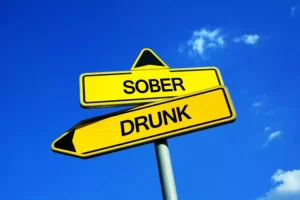
The activation of the brain’s reward system is central to problems arising from drug use. The rewarding feeling people experience due to taking drugs may be so profound that they neglect other normal activities in https://ecosoberhouse.com/ favor of taking the drug. For the brain, the difference between normal rewards and drug rewards can be likened to the difference between someone whispering into your ear and someone shouting into a microphone.

What is Risky Drinking?
However, it is more oriented toward people with higher levels of addiction. It involves more sessions per week than standard outpatient treatment. As in the words of Terry Guillemets, ‘Don’t let the past steal your present.’ Recovery is challenging but not impossible.
Alcohol Disorder and Are These Different from Addiction?

In 1982, the French company Laboratoires Meram developed acamprosate for the treatment of alcohol dependence. It was tested for safety and efficacy from 1982 until 1988 when it was authorized for use by the French government to treat alcoholism. The FDA approved the use of naltrexone to treat alcohol use disorders in 1994.
- Over time, the substances change your brain chemistry, and you become desensitized to their effects.
- Alcohol can lessen proper judgment, lower inhibitions, and feel like euphoria, when abused, while drugs can slow you down, make you lose attention and lead to organ failure.
- Although these drugs mimic the brain’s own chemicals, they don’t activate neurons in the same way as a natural neurotransmitter, and they lead to abnormal messages being sent through the network.
- Therefore, education and outreach are key in helping people understand the possible risks of drug use.
What are the signs that someone has a drug problem?
- Although they may seem similar, addiction and dependence are distinct concepts.
- Most drugs affect the brain’s “reward circuit,” causing euphoria as well as flooding it with the chemical messenger dopamine.
- The more of these signs or symptoms a person struggles with, the greater their substance use disorder.
- In the text revision of the DSM-5, the information on substance-induced mild neurocognitive disorders was updated to include symptoms caused by stimulants such as methamphetamine and cocaine.
- Also, the person will often need to take larger amounts of the drug to produce the familiar high—an effect known as tolerance.
People with mental health disorders are more likely to develop an SUD than the general population. Prevention programs involving families, schools, communities, and the media may prevent or reduce drug use and addiction. These programs include education and outreach to help people understand the risks of drug use. For addiction to certain drugs, there are also medicines that can help you re-establish normal brain function and decrease your cravings. Treatments for drug addiction include counseling, medicines, or both. Research shows that combining medicines with counseling gives most people the best chance of success.

Official answer
For some substances, such as alcohol, suddenly stopping it can be dangerous. In these cases, treatment involves gradually tapering off the drug over a set period to reduce withdrawal effects. Treatment for alcohol use disorder can include counseling, behavior therapy, and medicine. Some people may need to stay at a treatment center (including sleeping there). Many people also attend support groups, such as Alcoholics Anonymous, to talk to others and get support from people who have had similar problems in the past. People with addictions use illegal drugs or misuse prescription drugs, alcohol, or tobacco, even though doing so can cause problems in their lives.
What Is Substance Misuse?

A doctor along with a therapist designs a customized plan for you based on your co-occurring medical, mental and social problems to ensure recovery. Mutual-support groups provide peer support for stopping or reducing drinking. Group meetings are available in most communities at low or no cost, and at convenient times and locations—including an increasing presence online. This means they can be especially helpful to individuals at risk for relapse to drinking.
- Controlled substances are drugs or medications that have the potential to be misused and have a high risk of leading to substance use disorder.
- This can create an unhealthy drive to seek more pleasure from the substance and less from more healthy experiences.
- Drugs and alcohol are actually medicines used as forms of antiseptics or to treat diseases.
- Prevention programs that involve families, schools, communities and the media are effective in preventing or reducing drug use, abuse and addiction.
- Detox programs are designed to help you get rid of any residual traces of alcohol safely and can help to manage withdrawal symptoms.
Withdrawal symptoms can range from mild to severe; they can also sometimes be potentially dangerous. Talk to your doctor about how you can stop using a substance safely. In the text revision of the DSM-5, the information on substance-induced mild neurocognitive disorders was updated to include symptoms caused by stimulants such as methamphetamine and cocaine. Such additions were made in response to research demonstrating that prolonged stimulant use can produce lingering neurocognitive effects on learning, memory, and executive function.
- A person with an addiction has difficulty not using substances or doing rewarding activities, even if it is harming them.
- If you do start using the drug, it’s likely you’ll lose control over its use again — even if you’ve had treatment and you haven’t used the drug for some time.
- Use of hallucinogens can produce different signs and symptoms, depending on the drug.
- Treatment plans are not always necessary for physical dependence.
- To understand addiction, knowing what all the terms mean is essential.
- Through telehealth addiction treatment, you can begin and complete your treatment online.
Use of hallucinogens can produce different signs and symptoms, depending on the drug. The most common hallucinogens are lysergic acid diethylamide (LSD) and phencyclidine (PCP). Stimulants include amphetamines, meth (methamphetamine), cocaine, methylphenidate (Ritalin, Concerta, others) and amphetamine-dextroamphetamine (Adderall XR, Mydayis). They’re often used and misused in search of a “high,” or to boost energy, to improve performance at work or school, or to lose weight or control appetite.
Naltrexone was first developed in 1963 to treat addiction to opioids. In 1984, it was approved by the FDA for the treatment of difference between drugs and alcohol use of drugs such as heroin, morphine, and oxycodone. At the time, it was marketed by DuPont under the brand name Trexan.